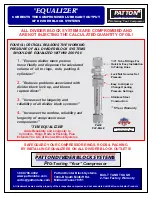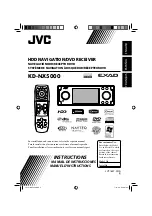
Oxford Technical Solutions Ltd. http://www.oxts.com
Page 26 of 42
Notes on specifications
To achieve full accuracy in real time, the xNAV650 will require appropriate differential corrections where
applicable, for example from a base station. Alternatively, a RINEX file can be downloaded post-mission
and used to post-process the data to full accuracy.
The
“1
” specification has been used for parameters where offset cannot be measured by the xNAV,
for example position (the offset of the base station cannot be found by the xNAV
alone). The “RMS”
specification was used where the offset is known, for example velocity. For angles and measurements
derived from the angles, the “1
” specification is used because the mounting of the xNAV compared to
the vehicle gives an offset the xNAV cannot measure.
▪
Full specification accuracy will be achieved after a short warm-up period during which motion inputs
will be used by the navigation system to estimate sensor error characteristics.
▪
The heading accuracy that can be achieved by the dual antenna system in the xNAV650
is 0.2° 1σ
per metre of separation in ideal, open sky conditions. The system can provide these accuracies in
static and dynamic conditions.
▪
For single antenna systems, the heading is calculated from the inertial measurements and requires
dynamic conditions to achieve the best performance.
▪
Non-ideal mounting of the GNSS antennas will reduce the heading accuracy, particularly for dual
antenna systems.
Heading accuracy
The heading accuracy that can be achieved by the dual antenna system in the xNAV650 is about 0.2°
1σ per metre of separation in ideal, open sky conditions. The system can provide these accuracies in
static and dynamic conditions. A two-metre separation is required to reach the accuracy listed in Table
11. The maximum recommended separation is five metres, at which it may be possible to achieve better
accuracy than that listed if the structure is rigid, including temperature variation.
For single antenna systems, the heading is calculated from the GNSS velocity vector and the inertial
measurements. The accuracies listed in Table 11 are achievable under dynamic conditions. Under
static conditions the heading accuracy of single antenna systems will degrade.
A feature called ‘heading
lock’ is available and can be used to improve single antenna performance in stationary periods, this
prevents drifting in static conditions.
Non-ideal mounting of the GNSS antennas will reduce the heading accuracy, particularly for dual
antenna systems.
When stationary, the heading from the xNAV will show some error; the size of the error depends on the
multipath in the environment.
With obstructions, the dual antenna might not be working in which case the performance will degrade
indefinitely. If it does not work, the antenna separation is relevant and the greater the separation the
greater the performance.
Export control classification number
Export control regulations are subject to change, and so the classification number of the xNAV650 may
also change. The information presented here is correct at the time of publishing.
Summary of Contents for xNAV650
Page 1: ...xNAV650 Hardware Manual 20 Years Navigation Experience in one small INS ...
Page 38: ...Oxford Technical Solutions Ltd http www oxts com Page 38 of 42 Appendix 2 Drawings ...
Page 39: ...Oxford Technical Solutions Ltd http www oxts com Page 39 of 42 ...
Page 40: ...Oxford Technical Solutions Ltd http www oxts com Page 40 of 42 Revision history ...















































